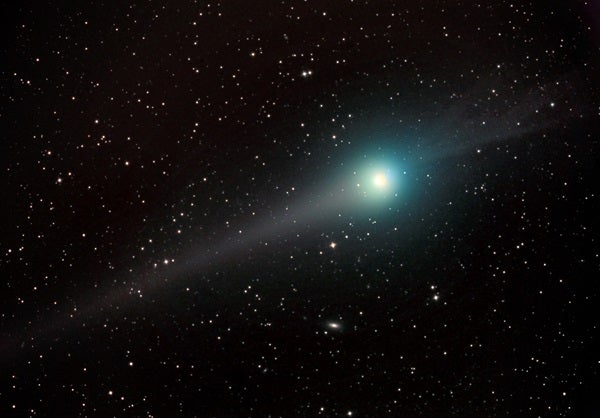Start looking for Comet Lulin around 9 P.M., which gives it a chance to rise above some of the thickest air. Looking at an astronomical object near the horizon introduces atmospheric distortion, which produces a defocused image, so let it rise a bit higher. To make finding the comet easy, use binoculars. If your observing site is really dark, try to see it with your naked eyes after you’ve ascertained its position through binoculars.
Last night, Comet Lulin was slightly below and to the right of Saturn. Because the comet is moving quickly, tonight it lies to Saturn’s upper right. The easiest night to spot Comet Lulin will be February 27, when it will lie slightly less than 1° (only 2 Full Moon-widths) west-southwest of Regulus, Leo’s brightest star.
To find Comet Lulin’s exact location before you head outside, use StarDome, Astronomy.com’s interactive star chart. For instructions, see my fellow Senior Editor Richard Talcott’s blog about observing Comet Lulin in your night sky.
And if you manage to grab an image of Comet Lulin, be sure to share it with us by submitting it to our Online Reader Gallery.
Related blog and video: John Chumack captures Lulin










